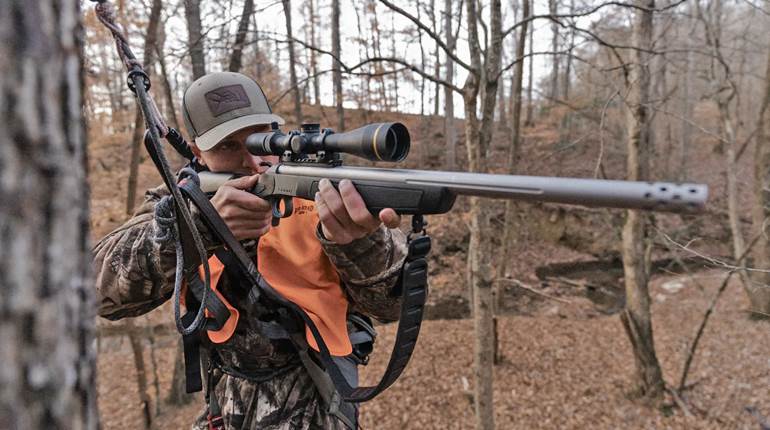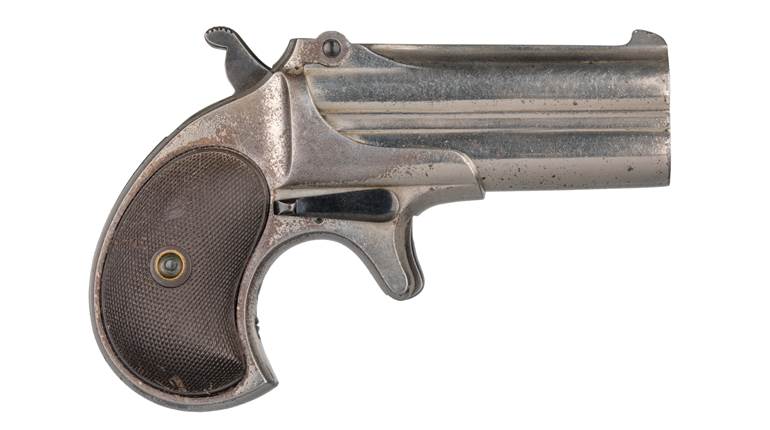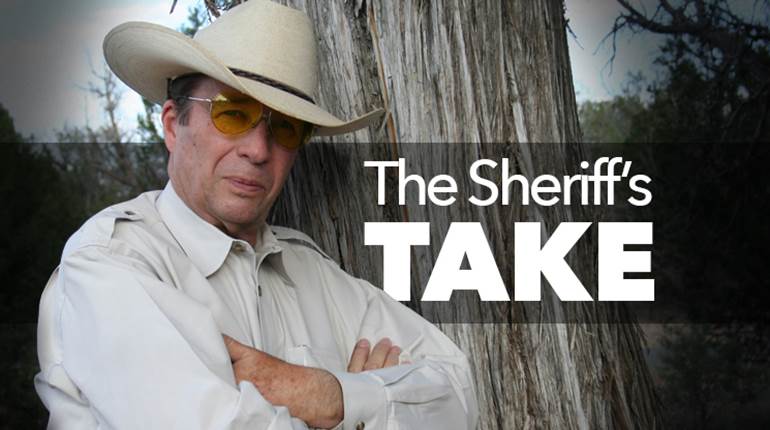
I love museums. Firearms museums in particular. When I was stationed at the Pentagon, I would spend many hours at the National Firearms Museum in the NRA building enjoying the displays, taking away different highlights each time. I had been wanting to take a father/son trip with my dad for some time, so this year, we arranged a trip to the Buffalo Bill Center of the West and Cody Firearms Museum. I had high hopes, and the trip exceeded them. We split our days between taking the exhibits in and visiting nearby Yellowstone National Park. The museum has somewhere north of 7,000 firearms with more than 4,000 on display; it is overwhelming in the best way. Even amid that number, a few items stood out. Undoubtedly, on any given day, other items from different eras or categories might grab more prominent attention, but on this first trip, there were a few that I was most taken by.
The museum does an excellent job of telling multiple stories through its displays. The story of firearm development and their unique role in the American experience is accessible to the non-enthusiast and serious ‘gun guy’ alike. Every American conflict and its arms are well-presented. A student of any era will find both the representative arms and the unique/rare/oddball guns of that time. I enjoyed seeing samples of each of the major revolvers produced by the Confederacy during the Civil War side-by-side, several of which I had only seen in photographs before. On the Buffalo Bill wing of the center, there were ample displays illustrating the role of firearms in his life and their prominent role in his Wild West show. It is safe to say that, no matter a person’s area of interest in firearms, they can find enough in the center to be fascinated.

Navy Colts
The absolute highlight for me was being able to see, firsthand, James Butler ‘Wild Bill’ Hickok’s Colt Model 1851 Navy. The frontier lawman and gunfighter was famously associated with a brace of ornate silver-plated Colts and carried the .36-cal. cap and ball six-guns well into the cartridge era. I pored over every detail of the revolver through the glass, noting the wear that suggested considerable use. Little details like the presence of a non-standard, dovetailed, silver front sight fascinated me. Did Hickok have it added to regulate point of impact for a preferred load? Or did the original brass cone front get knocked out of shape and require a replacement in some western town? Was this the Colt he used in the Tutt gunfight, ending the fight with a single shot at 75 yards? As luck would have it, just days after our trip, Rock Island Auction company auctioned off Hickok’s mate to the handgun on display, selling for $616,875.

I was so taken by getting to see the Hickok Colt that I was primed to notice other Navies. In another corner of the museum, Samuel Colt’s personal pair of presentation 1851s were on display and were stunning. The 1851 Colt is a classic, beautiful design, and this pair might be the most attractive set ever produced. Exceptionally well preserved, Colt’s own revolvers were beautifully engraved by Gustave Young and stocked in ivory with a high relief horse head on each.
Rounding out the Navy Colts, I enjoyed getting to see serial number ‘1’ of the improved 1861 Colt on display. Far from a special gun that was preserved by the factory for archival purposes, this Colt was well-worn and had the provenance of which soldier carried it during the Civil War.

Deringers
The museum seemed to have an unusual concentration of early American Deringers; the one ‘r’ kind made by early American Gunsmith Henry Deringer. (Copycats cashed in on the pistols’ popularity and made the two ‘r’ copyright evasion ‘derringer’ the generic description for small pistol.) I was struck by just how small and concealable some of these were, and there were numerous examples in at least three sizes. It seemed to be the single-shot percussion equivalent to Smith & Wesson’s J, K, & L frames with models and calibers appropriate for pocket, waistband and belt.

Throughout the firearm museum, I became close with many examples of derringers, pepperboxes and small revolvers from the frontier era. There is a diverse array of styles and calibers, many smaller in overall size than popular pocket pistols of today. Concealed carry is perhaps at an all-time high among Americans now, but the displays reminded me of the deep cultural roots of this right and practice.
The museum is brimming with handguns from all makers and eras, from historically to culturally significant. I saw a dozen or more models I had never experienced firsthand, a feat which is becoming increasingly difficult in my case. In one area, there was a cluster of movie/TV guns, and I was excited to see the Colt Single Action Armys and gun belts used by “Little Joe” and “Hoss” Cartwright on the Western series “Bonanza.” Nearby was one of John Wayne’s signature large-loop Winchester 92s and a stag-handled M1911 used by Sheriff Walt Longmire on the cable/Netflix series.

Browning’s Single-Shot
The museum has its roots in the Winchester company’s factory collection, and there are rifles on display to suit every taste and interest. My personal favorite was a section displaying some of prototypes John M. Browning submitted to Winchester. Here I could see the features that would evolve into many of the iconic Browning designs produced by Winchester. The centerpiece of Browning collection was a rifle that is my pick as a top standout.
John Browning and his brothers produced an innovative single-shot rifle in their small Utah shop. Winchester discovered this rifle and bought the rights to it, becoming an icon known as the Model 1885 “High wall.” In fact, Winchester’s discovery of that rifle established a lasting relationship with Browning, which led to many legendary models and opened the door for his later work with Colt, FN and Remington. Many of the tools our grandfathers won World War II with and the .50-cal. M2 machine gun, and the modified M1911 pistol I used in the Marine Corps 120+ years later, existed because of the genius on display in those shop-made rifles.

It was an unexpectedly moving experience to see one of those Browning-brothers-made rifles under the glass. I marveled on several levels. The graceful lines, the high-figure wood, exceptional fit and finish and the overall quality of it was striking to see on display. And to think that it all happened in a small shop on the frontier operated as a family business. Looking at that single-shot rifle, I was struck by its significance. Arguably no other single design had more long-term impact on shooters than the chain of events and relationships set off by that early Browning rifle.
Shotguns
A few years ago, I happened upon an old L.C. Smith shotgun, a side-by-side 12-gauge with more than 100 years of hard use, yet there was an undeniable level of quality and craftsmanship left behind. I’ve been interested in the “Elsies” ever since. In the basement of the museum, there is an interesting section. Row after row, alphabetized vertical pull-out drawers contain long guns and horizontal drawers safeguard handguns. This is the area that is full of hidden gems, many of which have not made it out to full display. I slid out one of the drawers, which exposed another dozen or more significant arms. One of the highlights for me, here, was pulling out a drawer in the ‘L’ section and seeing a grouping of beautiful double guns with the unmistakable aesthetics of the early L.C. Smiths. Most interestingly, as I was reading the labels, I found that sitting side by side in this basement case, as if they were really no big deal, were shotguns that had belonged to Annie Oakley and Theodore Roosevelt! But wait, there’s more . . .

I discovered another exciting shotgun in that mix, a Winchester that never reached production. During the Vietnam War, Winchester designed and made a simple, four-barrel pepperbox-type combat shotgun that was intended to arm resistance fighters, in a similar fashion to the OSS Liberator single-shot .45s of World War II. Evidently, the project did not move past exploratory and prototype stage, but the shotguns on display were interesting. Looking at the simple design, I am surprised that someone hasn’t attempted to bring a similar product to market as a low-cost home-defense gun.
Art
The Whitney Western Art Museum wing of the center was an unexpected highlight. I’ve always enjoyed western art, and when I was nearing overload, from taking in so many interesting or rare firearms, my father and I wandered over into the art museum. Any gun enthusiast would appreciate this area of the facility. On display were advertisements and paintings from the prominent rifle and ammunition makers during the golden age of outdoor ads. I particularly enjoyed one of the sketch books on display where you could see the artist working through elements of what would go on to be a “man (and Model 1910 Winchester) against bear” piece.
The museum housed a recreation of Frederic Remington’s studio filled with many of his personal items and artifacts; truly an unexpected bonus. I also enjoyed seeing many of Remington’s iconic and lesser-known pieces.

One of the highlights for me was the display of the plaster mold and some of the early models used in the creation of the ‘Rough Rider’ statue of Teddy Roosevelt by his friend Alexander Proctor. Standing next to the larger-than-life mold created 100 years ago, you could feel the sense of civic pride and the celebration of greatness it embodied. The equestrian statue took Proctor nearly three years to complete, and it is magnificent. I would never have guessed that a piece of art would have been one of my highlights from my trip to a firearms museum, but it absolutely was.

On several levels, this trip was special to me. One, any opportunity to share time and a great experience with my dad is going to be memorable. He deserves a medal for patiently trooping through the museum with me as I spent a serious amount of time absorbing and level of detail displayed throughout. The town of Cody and the daytrips into Yellowstone would have been worth the trip by themselves. In one afternoon’s drive, we experienced some of the most spectacular sights I’ve seen anywhere in the world, along with up-close encounters of bison and bighorn sheep. I highly recommend the Buffalo Bill Center of the West as a ‘must-do’ trip on any gunner’s bucket list.





































